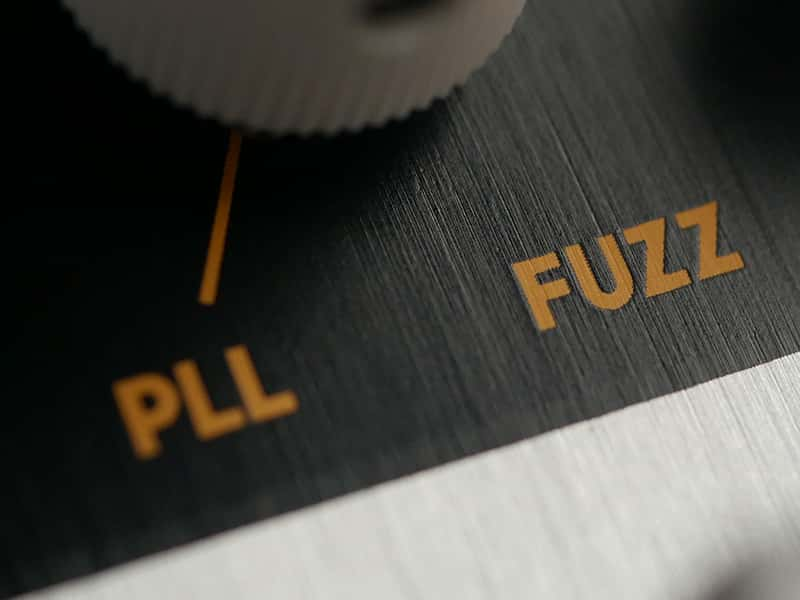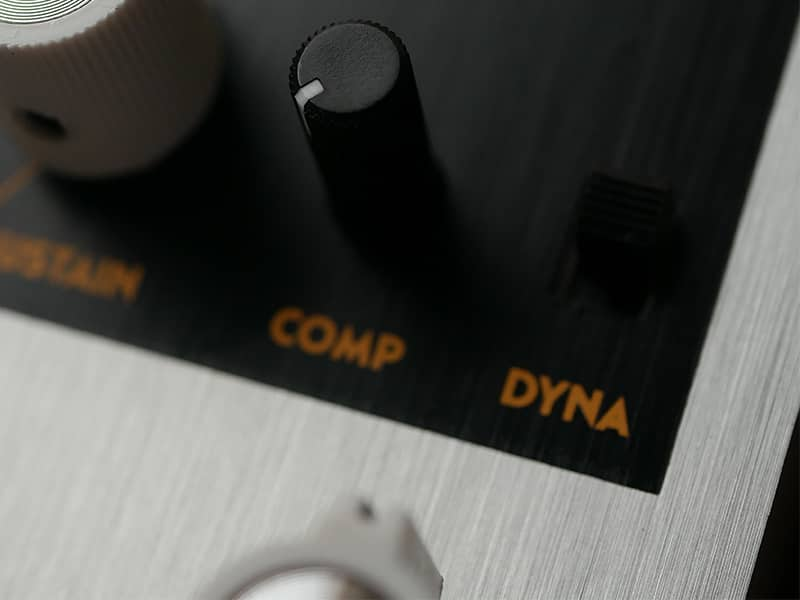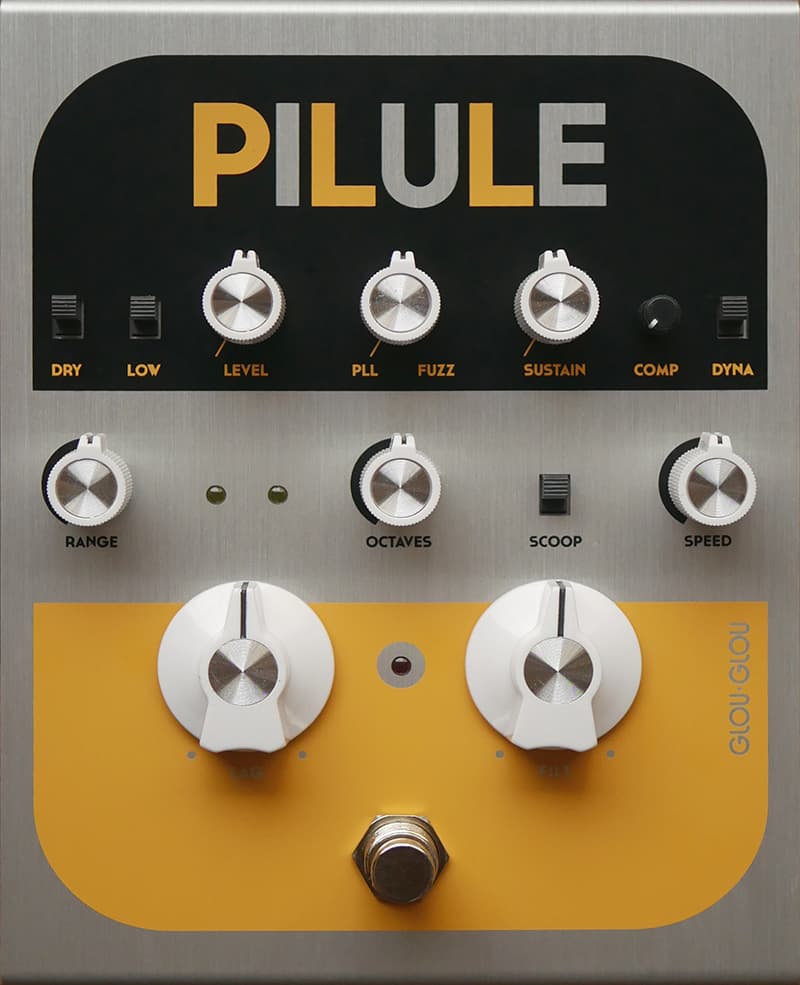PILULE
your sonic dose of chaotic fuzz & locked loop madness
Pilule is both a fuzz with a peculiar decay and a PLL circuit that
can shift your note several octaves up.
In its most extreme settings, the PLL acts like a waveshaper, changing
character depending on the pitch of the incoming note. Alongside
octave-ups, you may also hear octave-downs, fifth-downs, and
vowel-like filter tones.
Pilule can behave polite and smooth, but it can also get wild and
glitchy — it often surprises.
What is a PLL?
A PLL (Phase-Locked Loop) is a feedback system that tries to keep two signals in sync. It works like this:
A comparator measures the difference in frequency and phase between the input signal and a local oscillator.
This difference creates an error signal.
The error is sent through a filter and used to control the oscillator.
The oscillator then adjusts itself until it “locks” to the input signal.
Once locked, the oscillator follows the pitch of the incoming signal. Because the oscillator frequency can be divided or multiplied, a PLL can generate harmonically related signals: octaves up, octaves down, subharmonics, and more.
In short: a PLL constantly listens, compares, and corrects itself in a loop, until it moves in perfect step with the input.

output
LEVEL – Controls the overall output volume of the combined fuzz and PLL signals (blend is set by the PLL/FUZZ knob).
DRY – Adds the clean signal back into the mix.
DYNA – Restores some original dynamics after the fuzz/PLL stage (expansion). When active, the SUSTAIN knob sets the level. For best results, keep SUSTAIN at least halfway up.
SCOOP – Cuts some midrange frequencies from the PLL signal if it feels too aggressive.
CONDITIONING
LOW – Filters the signal before the fuzz/PLL stage. It stabilizes low notes but reduces high-note tracking. Very useful for bass, and also good for guitar if you mostly play low notes or power chords.
SUSTAIN – Controls the gain before the fuzz/PLL stage. Low settings = little sustain.
COMP – Compressor before the fuzz/PLL stage. Fully CCW = off. Fully CW = boosts weak signals, increasing sustain (and sometimes chaos).
The sweet spot between SUSTAIN and COMP depends on your instrument, pickups, and playing style.
These controls help you “enter” the PLL in the right way.
Keep in mind: Pilule is monophonic. Playing strictly monophonic lines (avoiding open string resonances or overlapping notes) gives the best tracking.
Neck pickups usually work better than bridge pickups, and the sweet spot on the fretboard is between the 5th and 12th frets.

PLL
the following controls affect only the PLL.
All five interact — sometimes RANGE or LAG might feel ineffective, but in different knob combinations (e.g. SPEED at 5–6, OCTAVE > 2) they will have a noticeable impact.
OCTAVE – Shifts the signal up from 0 to 5 octaves.
SPEED – Sets how fast the PLL reacts to pitch, 1–2 = slow, 3–4 = normal, 5–6 = strange wave-shaping behavior.
FILT – PLL filter. Not a tone filter you’ll “hear,” but a key parameter. Fully CCW, pitch becomes unstable (like vibrato). For clean, stable pitch, set around 9 o’clock.
RANGE – Defines the frequency range. Position 1 blocks high frequencies from being tracked. In waveshaper mode, it also changes timbre.
LAG – Adds variations in waveshaper mode.
